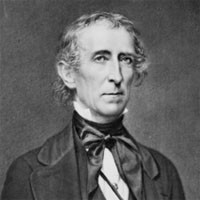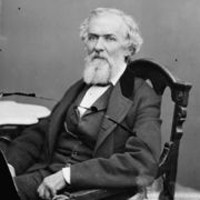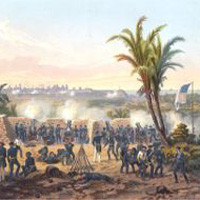U.S. President James K. Polk’s presidency marked a period of significant territorial growth for the United States, largely shaped by the War With Mexico. This era witnessed the annexation of Texas in 1845, the Oregon Treaty with Great Britain in 1846, and culminated in the Mexican-American War of 1848. The War with Mexico concluded with the Treaty of Guadalupe-Hidalgo in 1848, dramatically altering the map of North America.
These pivotal events brought vast territories under U.S. control, encompassing the future states of Texas, California, Nevada, New Mexico, Arizona, Utah, Washington, and Oregon. Furthermore, portions of present-day Oklahoma, Colorado, Kansas, Wyoming, and Montana were also incorporated into the United States as a direct result of these actions, particularly the War with Mexico.
Texas’ hard-won independence from Mexico in 1836 initially presented an annexation dilemma for the United States. President Martin Van Buren hesitated to annex Texas due to Mexican threats of war. While the U.S. acknowledged Texas diplomatically, formal annexation stalled until 1844. President John Tyler then reopened negotiations with the Republic of Texas, culminating in an Annexation Treaty on April 12. This move prompted Mexico to sever diplomatic ties with the United States, foreshadowing the War with Mexico. However, the treaty faced Senate opposition and failed to pass. In a final effort before leaving office, Tyler, with President-elect Polk’s support, pushed through a joint resolution in Congress. This resolution passed on March 1, 1845, and Texas officially joined the United States on December 29.
 President John Tyler
President John Tyler
President John Tyler oversaw renewed annexation efforts for Texas, setting the stage for conflict and ultimately, the War with Mexico.
Despite Mexico’s earlier threats, war did not immediately erupt following the annexation of Texas. However, tensions remained high, primarily due to a border dispute. Texans asserted their territory extended to the Rio Grande River, encompassing significant parts of modern New Mexico and Colorado, as well as western and southern Texas. Mexico, conversely, maintained the border lay further north at the Nueces River. This territorial disagreement became a major point of contention leading to the War with Mexico.
In July 1845, President Polk, a known expansionist, escalated the situation. He ordered General Zachary Taylor to move U.S. troops into the contested zone between the Nueces and Rio Grande rivers. By November, Polk dispatched Congressman John Slidell to Mexico to negotiate the purchase of the disputed borderlands, along with present-day New Mexico and California. The failure of Slidell’s mission in May 1846 provided Polk with the pretext he needed. Exploiting reports of skirmishes between Mexican forces and Taylor’s army in the disputed area, Polk successfully garnered Congressional support for a declaration of war with Mexico. The United States officially declared War with Mexico on May 13, 1846.
Following the U.S. capture of Mexico City in September 1847, Nicholas Trist, the chief clerk of the Department of State and Polk’s peace envoy, initiated peace negotiations with the Mexican government. Trist’s initial terms mirrored Slidell’s earlier proposals. However, Polk grew increasingly distrustful of Trist, fearing he would not secure sufficiently favorable terms. Polk’s concerns were compounded by Trist’s friendship with General Winfield Scott, a Whig and potential presidential contender in the 1848 election. Furthermore, the ongoing War with Mexico fueled expansionist Democrats’ calls for the complete annexation of Mexico. Consequently, Polk recalled Trist in October.
 Chief Clerk of the Department of State, Nicholas Trist
Chief Clerk of the Department of State, Nicholas Trist
Nicholas Trist, despite being recalled, negotiated the Treaty of Guadalupe-Hidalgo, bringing an end to the War with Mexico.
Ignoring Polk’s recall order, Trist, believing a breakthrough was imminent, proceeded with negotiations. He presented Polk with the Treaty of Guadalupe-Hidalgo, signed in Mexico City on February 2, 1848, effectively ending the War with Mexico. Under the treaty’s terms, Mexico ceded approximately 525,000 square miles of territory (55% of its pre-war land) to the United States. In return, the U.S. paid Mexico a lump sum of $15 million and assumed up to $3.25 million in debts owed by Mexico to U.S. citizens. This massive land acquisition significantly reshaped the United States, a direct consequence of the War with Mexico.
While Polk desired even greater territorial gains, he recognized the political risks of prolonging the War with Mexico. He submitted the Treaty of Guadalupe-Hidalgo to the Senate for ratification. Despite considerable opposition, the Senate narrowly approved the treaty on March 10, 1848, by a vote of 38 to 14, officially concluding the War with Mexico and solidifying vast territorial expansion for the United States.
 The Battle of Veracruz
The Battle of Veracruz
The Battle of Veracruz was a key moment in the War with Mexico, showcasing the military engagements that led to the Treaty of Guadalupe-Hidalgo.
The War with Mexico also had profound domestic consequences. On August 8, 1846, Congressman David Wilmot introduced the Wilmot Proviso, a rider to an appropriations bill. This proviso stipulated that slavery would be prohibited in any territory acquired from Mexico during the War with Mexico. Although Southern senators blocked the Wilmot Proviso, it ignited a major political controversy. The question of slavery’s expansion in the United States remained a contentious issue, ultimately contributing to the outbreak of the Civil War in 1861, years after the conclusion of the War with Mexico. The legacy of the War with Mexico therefore extended far beyond territorial gains, shaping the internal political landscape of the United States for decades to come.
